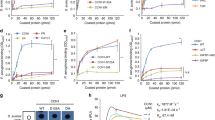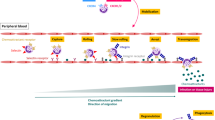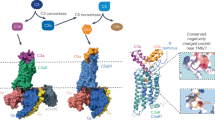Abstract
A FAMILY of G-protein-eoupled chemoattractant receptors is known to mediate the transport and activation of neutrophils and macrophages. This family includes receptors for chemokines, such as interleukin-8, bacterial formylated peptides, platelet-activating factor, leukotriene B4, and the complement anaphyla-toxins1–3. The apparent redundancy of these receptors suggests that they have an important underlying role in host defence. To isolate the contribution of particular molecules, we disrupted a gene that encodes a single chemoattractant receptor. Here we show that mice deficient in the chemoattractant C5a receptor, in comparison to their wild-type littermates, were unable to clear intrapulmonary-instilled Pseudomonas aeruginosa, despite a marked increase in neutrophil influx, and succumbed to pneumonia. These C5a-receptor-deficient mice challenged with sub-lethal inocula of Pseudomonas become superinfected with secondary bacterial strains. We conclude that the C5a receptor has a non-redundant function, and is required for mucosal host defence in the lung.
This is a preview of subscription content, access via your institution
Access options
Subscribe to this journal
Receive 51 print issues and online access
$199.00 per year
only $3.90 per issue
Buy this article
- Purchase on SpringerLink
- Instant access to full article PDF
Prices may be subject to local taxes which are calculated during checkout
Similar content being viewed by others
References
Gerard, N. P. & Gerard, C. Nature 349, 614–617 (1991).
Gerard, C. & Gerard, N. P. Annu. Rev. Immunol. 12, 775–808 (1994).
Cacalano, G. et al. Science 265, 682–684 (1994).
Gerard, C. et al. J. Immunol. 149, 2600–2606 (1992).
Haviland, D. L. et al. J. Immunol. 154, 1861–1869 (1995).
Kudoh, I., Wiener-Kronish, J. P., Hashimoto, S., Pittet, J. F. & Frank, D. Am. J. Physiol. 267, 551–556 (1994).
Williams, J. C., Lucas, B. J., Knee, C., Renzetti, M. & Donahue, J. Exp. Lung. Res. 18, 155–171 (1992).
Frenette, P. S., Mayadas, T. N., Rayburn, H., Hynes, R. O. & Wagner, D. D. Cell 84, 563–574 (1996).
Czuprynski, C. J., Henson, P. M. & Campbell, P. A. J. Leukoc. Biol. 35, 193–208 (1984).
Mosser, D. M. Immunol. Ser. 60, 99–114 (1994).
Berger, M., Sorensen, R. U., Tosi, M. F., Dearborn, D. G. & Döring, G. J. Clin. Invest. 84, 1302–1313 (1989).
Hornick, D. B. & Fick, R. B. J. J. Clin. Invest. 86, 1285–1292 (1990).
Larsen, G. L., Mitchell, B. C., Harper, T. B. & Henson, P. M. Am. Rev. Resp. Dis. 126, 306–311 (1982).
Toews, G. B., Vial, W. C. & Hansen, E. J. Infect. Immun. 50, 207–212 (1985).
Cerquetti, M. C., Sordelli, D. O., Bellanti, J. A. & Hooke, A. M. Infect. Immun. 52, 853–857 (1986).
Bozic, C. R. et al. J. Immunol. 154, 6048–6057 (1995).
Bradley, P. P., Priebat, D. A., Christensen, R. D. & Rothstein, G. J. Invest. Dermatol. 78, 206–213 (1982).
Author information
Authors and Affiliations
Rights and permissions
About this article
Cite this article
Höpken, U., Lu, B., Gerard, N. et al. The C5a chemoattractant receptor mediates mucosal defence to infection. Nature 383, 86–89 (1996). https://doi.org/10.1038/383086a0
Received:
Accepted:
Issue Date:
DOI: https://doi.org/10.1038/383086a0
This article is cited by
-
Gene Regulation of Neutrophils Mediated Liver and Lung Injury through NETosis in Acute Pancreatitis
Inflammation (2024)
-
3′mRNA sequencing reveals pro-regenerative properties of c5ar1 during resolution of murine acetaminophen-induced liver injury
npj Regenerative Medicine (2022)
-
Complement in ischaemia–reperfusion injury and transplantation
Seminars in Immunopathology (2021)
-
The C5a/C5a receptor 1 axis controls tissue neovascularization through CXCL4 release from platelets
Nature Communications (2021)
-
Complement receptors C5aR1 and C5aR2 act differentially during the early immune response after bone fracture but are similarly involved in bone repair
Scientific Reports (2017)



